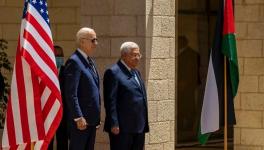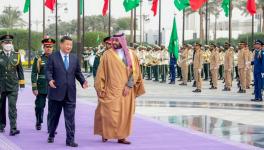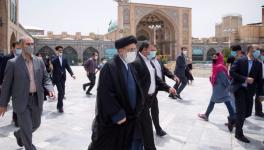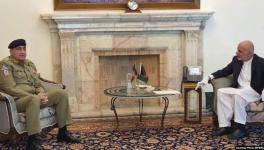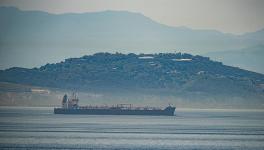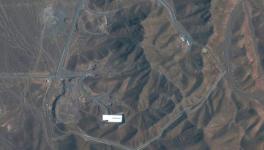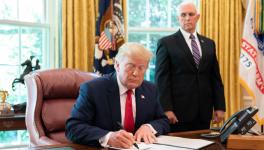Obama Reading from the Bush Book – WMD’s Now in Iran
The war drums are out in Washington, with the same people beating them as did for the last Iraq war. Even the excuses are same: nuclear weapons in Iran. The missing WMD's in Iraq have not daunted their spirit one bit. Obama virtually read from the Bush book, claiming on 25th September that western intelligence agencies had uncovered a “secret enrichment facility” when the same had already been reported by Iran to IAEA on 21st of September, a good four days before the Obama announcement. Sarkozy and Gordon Brown dutifully echoed Obama. The chorus of the world media was entirely predictable, finally a smoking gun for Iran's nuclear bomb ambitions. Even the normally more critical papers – the Guardian included – echoed the Obama-Brown-Sarkozy line; it was the Western intelligence agencies who had “outed” Iran, Iran admitting its nuclear only when it was about to be exposed.
The simple facts of the case are that Iran is obligated to report any nuclear facility to IAEA only six months before it introduces any nuclear material in it. This is the original safeguards protocol it signed with IAEA. From 2004 to February 2007, it had agreed voluntarily to abide by the additional protocol, which would have demanded the disclosure of such a facility before starting its construction. It had also agreed then to a modification of the Clause 3.1 in the original protocol, with one that had a similar provision.
Iran never ratified the additional protocol, (which incidentally the US also did not for a long time) and is within its legal rights to go back to the original safeguards agreement. Iran withdrew from the additional safeguards after it felt that all its attempts to negotiate on its nuclear energy program was coming up against only threats and further demands from the US and the West.
While withdrawing from its voluntary commitments on the Additional protocol, Iran also withdrew from the modified 3.1 Clause. This is where there is a dispute – IAEA had stated at that time that Iran could not unilaterally withdraw from the modified Clause 3.1 but needs IAEA’s consent. This is why El Baradei has stated that Iran was in violation of the safeguard agreement by not disclosing its Qom facility earlier, though he also clarified, "I do not think based on what we see that Iran has an on-going nuclear weapons program."
Whether Iran violated the safeguards agreement or not is a tricky legal point. The more important issue not whether Iran has violated its safeguard agreement with IAEA but whether by building this facility, Iran is moving towards nuclear weapons? The western media has equated the second enrichment facility with Iran building nuclear weapons. The facts are again quite different – while the second facility allows Iran greater enrichment capability, all its nuclear materials will still be under IAEA safeguards. Declaration of the Qom facility as an enrichment plant ensures that no diversion of nuclear material is possible from it.
Do the US intelligence agencies really believe that Iran is near acquiring a nuclear weapon? The 2007 National Intelligence Estimate, compiled by 16 intelligence agencies of the US, came to the conclusion that Iran had given up its nuclear weapons program in 2003. It has recently again confirmed that there is no evidence that Iran has restarted such a program. Newsweek, reported in its September 16th story, “The officials, who asked for anonymity when discussing sensitive information, said that U.S. intelligence agencies have informed policy makers at the White House and other agencies that the status of Iranian work on development and production of a nuclear bomb has not changed since the formal National Intelligence Estimate (NIE) on Iran's "Nuclear Intentions and Capabilities" in November 2007” (Newsweek, Intelligence Agencies Say No New Nukes in Iran, Sep 16, 2009).
Iran undoubtedly wants to build its nuclear capability. That is why it is developing and installing enrichment facilities. It has a legal right under the NPT to do so. The problem with the US position on Iran is that while the US itself has not observed the NPT obligations – good faith negotiations for nuclear disarmament -- it wants an NPT plus regime for others. In this new global order, only the favoured few would have access to fuel enrichment and reprocessing (ENR) technologies. While India might be allowed to keep its indigenous ENR technologies, Iran's possession of such a technology is seen to be de-stabilising the world and an existential threat to Israel. Or so Israel and the US have the world believe. That is why even though Iran legally has the right to enrich nuclear fuel, it has to be coerced into giving up this right. This is the crux of the US position; the man in the White House might have changed, but its policies remain the same.
In this world-view, Israel is not seen to be an existential threat to any nation. It can possess 200 -300 weapons, continue to flout international law, threaten Iran’s nuclear facilities, carry out targeted assassinations and is yet seen to be a “democracy” unlike others in West Asia. It is this blatant partisanship of the US and the West that gives Iran a legitimacy that it would not otherwise enjoy. Iran and other nations in West Asia have repeatedly asked that West Asia be declared a nuclear weapons free zone and have been always turned down. The issue is not one of Israel’s security, but its ability to dominate the region. This demands that it not only be the pre-eminent military power in the region but also the sole nuclear weapons power there. Iran does not need to produce nuclear weapons to endanger this dominance. If it has nuclear weapons capability even without possessing one, it will disturb Israel’s position as West Asia’s dominant hegemon.
The Obama administration has brought back the military option with its attendant sabre rattling. The problem for the US is that no military action can prevent Iran from turning nuclear. It is too big and the US no longer has the capability of marching into another West Asian country. Any action it takes, and that includes Israeli military action, can only delay matters. This is what even the US Secretary of Defence, Robert Gates says (on CNN’s “State of the Nation” 27th September 2009), “The reality is, there is no military option that does anything more than buy time. The estimates are one to three years or so”. The only country that can help in Iran not going nuclear is ultimately Iran. This is what the US will have to come to terms with – the sooner the better. A lesson it still does not seem to have learnt, the Iraq disaster notwithstanding.
Get the latest reports & analysis with people's perspective on Protests, movements & deep analytical videos, discussions of the current affairs in your Telegram app. Subscribe to NewsClick's Telegram channel & get Real-Time updates on stories, as they get published on our website.









